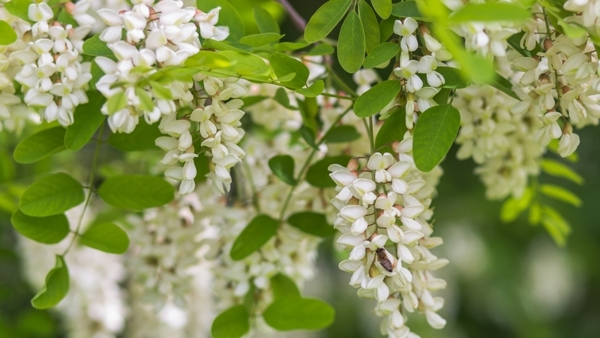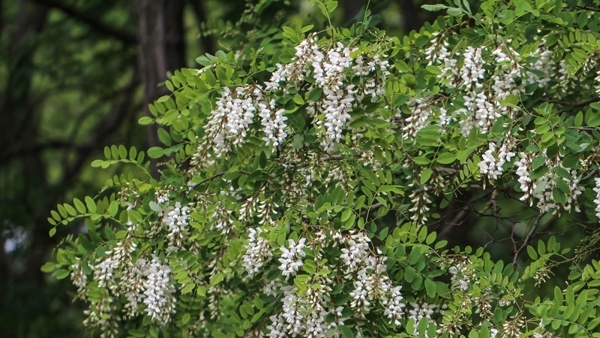Yates Account
Join now
Create a Yates account today!
Sign up to join the Yates Garden Club for monthly e-mails packed with seasonal inspiration, tips for success & exclusive promotions.
Plus if you’re a Garden Club member you can take part in the Yates Growing Community - a blog to share successes, get advice & win prizes in fun challenges along the way!

Forgot password
Enter the email address associated with your account, and we'll email you a new password.

Robinias are popular deciduous shade trees. Some varieties are grafted and grown into a lollipop shape (called ‘Mop Top’ robinias), have bright yellow foliage during the warmer months (Golden robinias) or white or purple flowers. Growing from 2 – 12 m tall depending on the variety robinias make an attractive backyard or street tree or smaller varieties can be grown in a container.
How to grow robinia in a garden
- Choose a sunny spot with well drained soil. Enrich the soil with Yates Thrive Natural Blood & Bone with Seaweed. If the soil is heavy or clay-based, add gypsum and fork in well.
- Dig the planting hole twice as wide and to the same depth as the root-ball. Remove the shrub from the container, gently tease the roots and cut away any circled or tangled roots.
- Position in hole and backfill with soil, gently firming down.
- Form a raised or doughnut-shaped ring of soil around the outer edge of the plant's root zone. This helps keep water where it's needed. Always water in well after planting to settle the soil around the roots and keep the soil moist for several weeks while the new plant establishes.
- Mulch around the base with organic mulch like bark chips, woodchip or pea straw, keeping it away from the trunk.
- Water deeply, once or twice a week, depending on weather conditions while the new tree establishes.
- Feed in spring and autumn with Yates Thrive All Purpose Granular Plant Food. TIP: For an added boost, apply Yates Thrive Fish Blood & Bone Plant Food Concentrate.


How to grow robinia in a pot
- Pick a variety that can be grown in a pot, like 'Lace Lady' or 'Bellas Gold Mop Top'. Choose a pot at least 600mm wide and deep. Position in full sun.
- Fill pot with quality potting mix, such as Yates Premium Potting Mix. Remove the plant from the container, gently tease the roots and cut away any circled or tangled roots.
- Position in hole and backfill with potting mix, gently firming down. Water in well.
- Water deeply, once or twice a week, depending on weather conditions.
- Feed in spring and autumn with Yates Thrive All Purpose Liquid Plant Food. TIP: For an added boost, apply Yates Thrive Fish Blood & Bone Plant Food Concentrate.
Growing tips
Prune trees to shape and size.
Some robinias are grafted onto rootstock that produces suckers. To try and minimise suckering, avoid digging in the root zone and if suckers appear cut them off below ground level.
Japanese maples, also known as Acers, are attractive trees with stunningly vibrant autumn and spring foliage. Some varieties have brightly coloured bark & stems.
Dwarf Pōhutukawa
Dwarf Pōhutukawa (AKA Pacific Rata or Tahitian Pohutukawa) is a fantastic flowering shrub or small tree ideal for use as a feature plant, hedge or screen.
Daphne
Daphne is an evergreen shrub with glossy green leaves and beautifully fragrant flowers in shades of white and pink. Grow in the garden or in pots.
Smoke Bush
Smoke Bush is an ideal shrub to add a splash of foliage colour to gardens. It provides year-round seasonal interest and looks fabulous in both gardens and pots.
Recommended products
Yates Thrive All Purpose Granular Plant Food
Easy-to-use granular plant food specially formulated with both fast acting and gradual feeding for up to 3 months, in the garden or pots.
Yates Thrive Fish Blood & Bone Plant Food Concentrate
A balanced fish based plant food boosted wtih added NPK to ensure strong, lush plant growth and healthy soil.
Yates Premium Potting Mix
A premium potting mix, ideal for all potted plants and shrubs, including ornamentals, fruit trees, vegies and herbs.
Yates Thrive All Purpose Liquid Plant Food
A liquid plant food suitable for most types of plants and provides balanced feeding to promote stronger, healthier growth and greener foliage. Feeds through the leaves and roots for fast results.
















Share
Share this article on social media